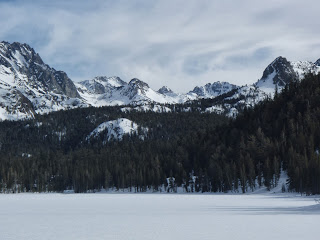Dale
Matson
It is good when people find their
niche. This is true of vocations and it is true of locations. I have been
blessed to find both. Sometimes our niche changes over time. I found my niche
when I moved to Fresno California in 1992. I moved here with a fresh research
doctorate and became a program director in the Fresno Pacific University
Graduate School. During my tenure there, I had the opportunity to run, hike,
ski and backpack the trails of the Central Sierras. The foothills, mountains,
lakes and the wilderness have had a profound effect on my perceptions and
priorities. It is as if, like a salmon, I have returned to my spawning grounds.
I under- stand why John Muir and others who formed the Sierra Club were
evangelists for the wilderness. Get people back to the basics of life. The
wilderness is a prescription for the ills of modern life. It is a means quicken
a dormant part in all of us civilized and citified folks. He was the priest of
the wilderness and I am simply a priest in the wilderness. After retirement
from FPU, I was led to study for ordination in the Anglican Priesthood and was
ordained in 2007.
Earlier I also began serving as a civilian
volunteer member of the Fresno County Sherriff ’s Search And Rescue Team
(SART). It was an opportunity to serve and a reason to stay fit. My familiarity
with and comfort in the Sierras made me useful to the team as a member of the
mountaineering unit.
I recently published an article in
the “Valley Voices” section of the Fresno Bee and have been thinking that many;
perhaps most folks in Fresno County are not aware of the opportunities for recreation
and exposure to some of the most beautiful sights on this earth.
I began a blog called Mid Sierra
Musings”. It is mostly about my experiences in the central Sierras. There
currently seems to be a vicarious thirst and large viewership for things
related to self- sufficiency, wilderness living. There are ‘reality series’
programs like “Alaska The Last Frontier” and “Mountain Men”.
I have the best of both worlds
since I have all the conveniences of city living with quick access to the
Sierra National Forest and both Sequoia/Kings Canyon (SeKi) and Yosemite an
hour away. I can mow my lawn in the morning and be above 7,000’ skiing an hour
and a half later.
There has been considerable
interest in the photo essays I have posted on the blog and I decided to combine
them in paperback book and Kindle formats. The advantage of the Kindle format
is that it allows for lots of color photographs while color photographs are not
practical economically for a paperback. While I am not the stature of a John
Muir, my intentions are similar. I want to introduce you to what is there for
you to think about, to see, smell, hear and share with others. Even if it is
not possible for you to get into the wilderness, it is an opportunity to see it
through the eyes of an eyewitness. May you be both edified and entertained.
Fr. Dale Matson 11/2013
All Saints Day
Here is the link to the Kindle
Book. The paperback will be out later this week.
http://www.amazon.com/Mid-Sierra-Musings-Dale-Matson-ebook/dp/B00GANH7R0/ref=sr_1_1?ie=UTF8&qid=1383175985&sr=8-1&keywords=mid+sierra+musings








.JPG)

























